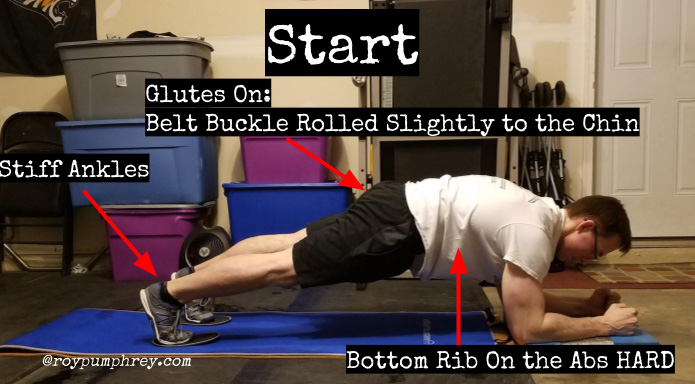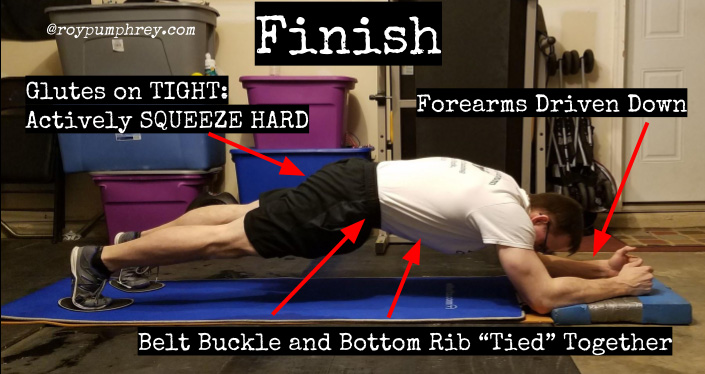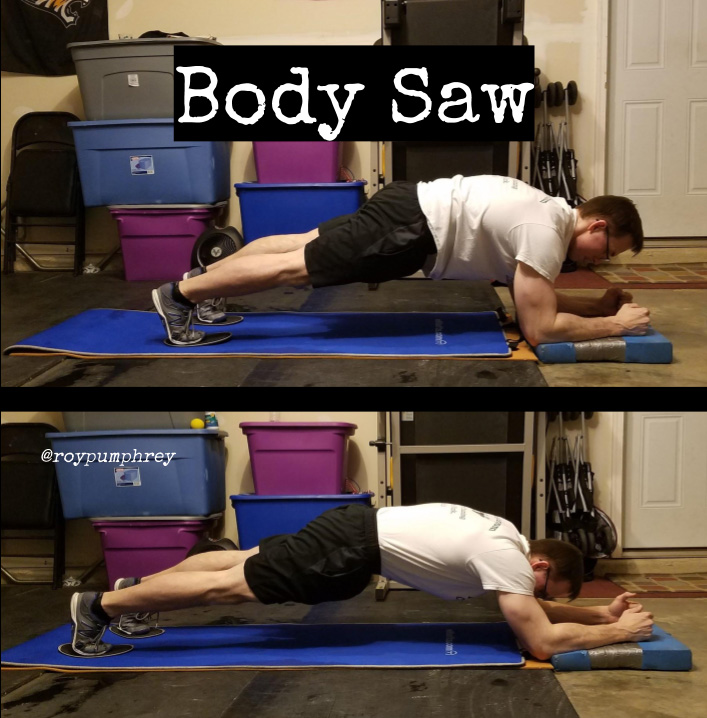“Ribs Down”
I say that a LOT.
Like all day.
See I also say,
“Chest Up”
A Lot.
And most folks think chin up is chest up <—if this is you, you’re thoracic spine needs some love. And by “love” I mean, EXTENSION.
But these are different things.
And too much “chest up” usually leads to compensation and the dreaded Lumbar Hyperextension…
The Duck Butt
An aggressive over-arching of the lower back.
Which is another compensation pattern that’s associated with a tight thoracic spine..
Wait But Why?
How can excessive cervical AND lumbar motion be the result of a stiff thoracic spine?
Easy, if the segments in the middle of the spine don’t move (do this exercise), the segments above and below must MOVE MORE to compensate for the lack of range of motion of the middle (thoracic) segments.
So we need to fix this.
One of the ways to help correct “using my ribcage as a brace and pivot point strategy” is to give yourself some stability BELOW the ribcage to help:
A: Pull it down
B: Keep it in place
C: Tell the brain that you don’t need to excessively arch the low back to create “core” stability. Instead the MUSCLES of the core can do it.
The Core Should Stop, NOT Create Motion
Anti Extension:
As we’ve discussed in previous installments, the core should resist/ brace motion,
NOT CREATE IT.
Which is why good core training is frequently referred to as “Anti” movement training.
As in, Anti:
- Flexion
- Extension
- Rotation
Popping the ribcage up is classic lumbar extension.
We need to keep that bottom rib down, on the “core” when we extend the thoracic spine….
The Body Saw:


Checklist:
- Forearms DUG into the ground aggressively. Not just the elbows. Hands through elbows and DIG.
- Ribcage on the abs the WHOLE TIME. We don’t want to overdo it, but some thoracic rounding/ flexion is ok, you’ll get the abzz more swole.
- Belt buckle to the chin slightly…ie, just enough for the core to “catch”. Once you’re “On” you’re “On”.
- Glutes on tight. Think, CRUSH THE SACRUM, the whole time, no resting.
- Have some “base” at the feet to allow for the hips to sit properly.
- NO rocking of the hips. Hips and shoulders flat the whole time.
- DIG the elbows and forearms aggressively and PULL from the scapula/ lats to pull back to the start.
Brotips:
- For more core work (but less serratus) grab something stable, like a heavy dumbbell or kettlebell (that your head will clear). <—-that added stability will increase the reps you can perform because you’ll have something to pull against.
- When it becomes
not so fucking miserableeasy add a band around the feet. The band will actively pull you apart. - If you feel it in your low back, your “core” isn’t locked down enough. Try pulling the belt buckle to the chin a bit more and concentrate on keeping your ass tight, especially a the end range of extension. <—–the ass tight part can not be overstated. Lose the glutes = Lose the pelvis = gain pain in the low back.
- Think about PUSHING and PULLING with the upper body, not just sliding back and forth. Like all core training this is about TENSION, not time, reps or reach.
- Don’t overreach. Get as “long” as possible but able to MAINTAIN TENSION through the lift.
Super Bro Tip:
- Get something heavy to hold onto.
- You’ll be able to get a LOT tighter and get more reps and range of motion and have a better thoracic angle.
- Yes, there is a single drawback, you’re not going to get the same level of serratus anterior involvement <—-and this muscle is often overlooked in scapula mechanics.



